Trying to eat healthier but not sure what’s really in your food? Food scanning apps make it way easier to check labels, spot hidden ingredients, and stay on track with your goals. Whether you’re counting calories, avoiding certain additives, or just want to eat clean, these apps can save you a ton of time. Let’s check out some of the best ones out there.
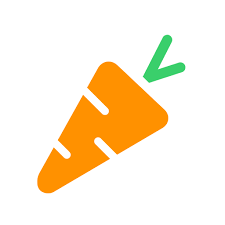
1. Yuka
Yuka is a food scanning app that helps users understand what’s in the products they buy by analyzing ingredients and nutritional information. By scanning a product’s barcode, the app gives it a score based on its health impact. This includes food items as well as cosmetics and personal care products. The rating system is color-coded and backed by a database of ingredient research, making it easier to spot items that align with different health goals or preferences.
Users can view detailed explanations for each product scanned, including the presence of additives, levels of sugar, salt, or saturated fat, and suggested alternatives. The app offers a simple and quick way to make more informed choices while shopping. It doesn’t prescribe a particular diet or way of eating but provides context that supports everyday decision-making at the grocery store.
Key Highlights:
- Barcode scanning for packaged food and cosmetics
- Color-coded rating system for quick understanding
- Ingredient analysis with detailed explanations
- Alternative product suggestions
Who it’s best for:
- Shoppers looking for quick product health insights
- People avoiding specific ingredients or additives
- Users who prefer a visual guide to food quality
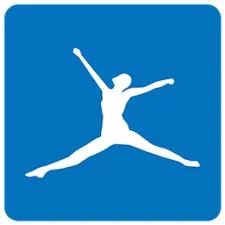
2. MyFitnessPal
MyFitnessPal is primarily a nutrition and fitness tracking app that also includes food scanning features. The barcode scanner lets users quickly log packaged food items and access nutritional information, which feeds directly into daily calorie and nutrient goals. The app is integrated with an extensive database that includes a wide range of commercial products, restaurant items, and homemade meals.
In addition to food tracking, MyFitnessPal supports goal setting for weight management, macronutrients, and exercise. While the app offers customization based on personal goals, it does not analyze food quality in terms of ingredients or additives. Instead, it focuses on helping users build awareness around eating habits and track progress over time.
Key Highlights:
- Barcode scanning for logging packaged foods
- Extensive food database including restaurants
- Tracks calories, macros, and other nutrients
- Syncs with fitness devices and exercise apps
Who it’s best for:
- People tracking calories or macronutrients
- Users managing fitness or weight goals
- Individuals who want data-driven meal logging
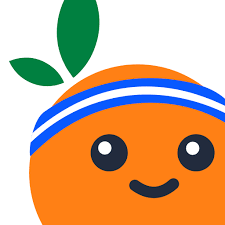
3. Fooducate
Fooducate is a food scanning app that provides users with basic product information, along with an overall health grade for each item. It assigns grades from A to D based on the ingredients, nutritional content, and presence of additives. Users can scan barcodes to receive a breakdown of each product’s components and how they may affect overall health.
The app also offers daily tips, meal tracking, and community support features. While Fooducate includes some personalized insights based on user goals, the grading system is standardized and intended to offer a general sense of how one item compares to others. It covers a wide range of packaged foods commonly found in supermarkets.
Key Highlights:
- Barcode scanning with letter-grade health ratings
- Ingredient and additive breakdowns
- Daily health tips and food tracking
- Covers a broad range of packaged food items
Who it’s best for:
- Users who want a simple health score for foods
- People looking to cut back on processed ingredients
- Shoppers wanting quick guidance in the store
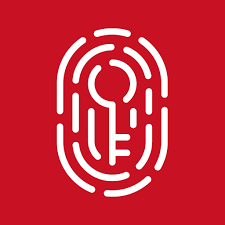
4. Edo
Edo is a food scanner that helps users interpret nutrition labels by offering a numeric score for packaged food items. After scanning a barcode, the app shows a product’s score and breaks down its nutritional values, allergens, and additives. It also points out how a specific food aligns with dietary goals and suggests potential alternatives that may be better suited to the user’s preferences.
The app is designed to offer a clearer picture of food content, especially for people who might find traditional nutrition labels overwhelming. While the focus is mostly on pre-packaged foods, it gives a general overview of how balanced or processed a product is.
Key Highlights:
- Numeric scoring for food quality
- Breakdown of nutritional values and ingredients
- Allergy and additive alerts
- Suggestions for product alternatives
Who it’s best for:
- Shoppers looking for a quick product summary
- Individuals tracking food content beyond calories
- People managing dietary sensitivities or goals
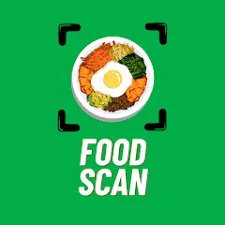
5. Scan Food
Scan Food is a barcode scanning app designed to provide quick nutritional insights for packaged foods. The app identifies key elements like calories, macronutrients, sugar, sodium, and saturated fat content. Once a product is scanned, users receive a short breakdown of the nutritional data, helping them make decisions based on their dietary needs or preferences.
Scan Food meant for quick scanning on the go, without the need to build full meal logs or track fitness data. It works well for those who want to check food labels without reading through long ingredient lists.
Key Highlights:
- Fast barcode scanning for packaged foods
- Displays basic nutrition info clearly
- Focus on calories, fats, sugar, and sodium
- Simple interface for everyday use
Who it’s best for:
- People who want fast food label summaries
- Users with basic dietary tracking needs
- Shoppers checking for high-fat or high-sugar content
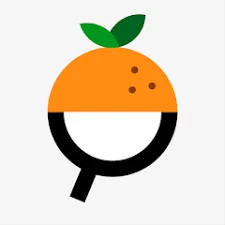
6. Open Food Facts
Open Food Facts is a community-driven app that allows users to scan barcodes and access a wide database of food products from around the world. The app offers information on ingredients, nutrition facts, allergens, and additives. Because it’s open-source, users can contribute by adding new products or updating existing ones, which helps keep the database current and diverse.
The app doesn’t score or grade foods but instead focuses on providing raw data in a straightforward format. It’s helpful for people who want to dig into what’s in their food without relying on brand marketing or filtered summaries. It includes details like Nutri-Score, Eco-Score, and NOVA groups to support more informed food choices.
Key Highlights:
- Open-source database with global food coverage
- Barcode scanning for ingredients and nutrition info
- Includes Nutri-Score, Eco-Score, and NOVA rating
- Community contributions keep data fresh
Who it’s best for:
- Users who want detailed, unfiltered food data
- People interested in food sustainability and processing
- Those who prefer transparent, community-driven tools
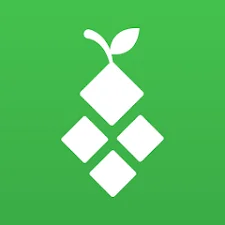
7. LabelScanner
LabelScanner is a simple barcode scanning app that reads nutrition labels and ingredient lists. Instead of providing scores or grades, it presents the information in a clean format so users can decide whether the product meets their needs. It can scan both printed packaging and digital labels, offering flexibility in different shopping settings.
The app does not include large databases or social features. Its focus is on utility and fast access to data. While it doesn’t offer personalized recommendations, LabelScanner is useful for people who are confident in reading nutrition info but want a quicker way to access it.
Key Highlights:
- Quick barcode and label scanning
- Displays ingredients and nutritional facts clearly
- Works with printed and digital labels
- No scoring or personal analysis
Who it’s best for:
- Users who prefer reading raw nutrition info
- Shoppers needing a fast, no-frills label reader
- People avoiding overly complex health apps
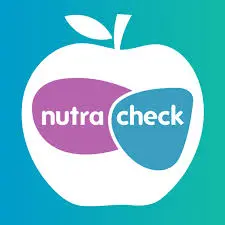
8. Nutracheck
Nutracheck is a food tracking and calorie counting app that includes a barcode scanner for packaged foods. It presents a full breakdown of nutritional content, including calories, fat, protein, carbs, fiber, and salt. The app supports manual food logging and integrates with activity tracking to provide a full overview of daily health habits.
Unlike apps that only rate food quality, Nutracheck focuses on helping users understand the nutritional profile of their meals. It also features visual tools like pie charts to display macronutrient balance, making it easier to see how meals fit into a broader eating plan.
Key Highlights:
- Barcode scanner with detailed nutrition breakdown
- Tracks full daily intake including meals and snacks
- Visuals to show macro and calorie distribution
- Supports integration with activity tracking
Who it’s best for:
- People counting calories or macros
- Users tracking daily food and exercise
- Anyone looking for data-focused meal logging

9. Lose It!
Lose It! is a calorie and nutrition tracking app that includes a barcode scanning feature for packaged foods. The scanner pulls data from a large food database and adds the item directly to the user’s daily log. Users can track calories, macronutrients, and specific goals like weight loss or maintenance. The app also offers progress charts and custom goal settings.
While Lose It! doesn’t score food based on healthiness, it provides full nutritional information to support informed choices. It’s built to help people monitor habits over time through logging, not to evaluate food quality in-depth.
Key Highlights:
- Barcode scanner for quick food logging
- Tracks calories, carbs, protein, and fat
- Simple interface with progress tracking
- Supports weight and activity goal setting
Who it’s best for:
- People focused on weight loss or calorie tracking
- Users who want a streamlined food log
- Those managing long-term eating habits
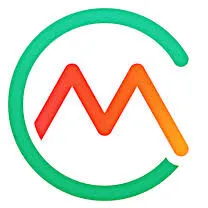
10. Carb Manager
Carb Manager is a nutrition tracking app with a focus on low-carb and ketogenic lifestyles. The barcode scanning tool lets users log packaged foods instantly, adding nutritional data directly into their daily diary. The app tracks net carbs, total carbs, fat, protein, and other nutrients relevant to low-carb eating plans.
While it includes features for detailed diet planning, the food scanning tool is useful for quickly identifying the carb content in everyday grocery items. The app doesn’t evaluate food quality but offers insight into whether items align with a low-carb diet. Users can also customize their macro targets.
Key Highlights:
- Barcode scanning with emphasis on net carbs
- Designed for keto and low-carb diet
- Tracks macros and daily nutrient intake
- Includes recipes and meal planning tools
Who it’s best for:
- People following keto or low-carb diets
- Users focused on tracking carbs and macros
- Shoppers checking carb content before buying
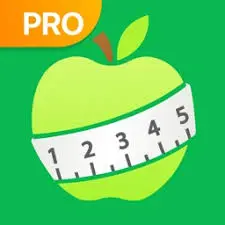
11. MyNetDiary
MyNetDiary offers food scanning alongside its broader tracking features for calories, macronutrients, and health goals. By scanning barcodes, users can add packaged foods to their food diary and see detailed nutrition facts. The app also allows for tracking of exercise, weight, and other health markers.
The app includes personalized insights based on user-entered goals and provides charts to help visualize progress. It doesn’t assign scores to foods but presents nutritional content in a clear format. Users can use the scanner in combination with meal planning and fitness tracking features for a full overview of daily habits.
Key Highlights:
- Barcode scanner with detailed nutrition tracking
- Supports personalized health and fitness goals
- Includes meal and activity logs
- Offers charts and progress insights
Who it’s best for:
- Users managing both diet and exercise
- People tracking calories, macros, and nutrients
- Individuals looking for a comprehensive wellness log
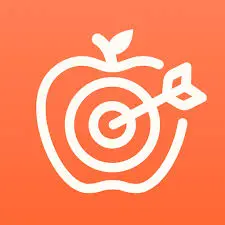
12. Cronometer
Cronometer is a detailed nutrition tracker that includes barcode scanning to quickly log foods. The app focuses on accuracy, using verified food data to give users a complete picture of their intake. It tracks not just calories and macros, but also vitamins, minerals, and amino acids, which makes it useful for people interested in a deeper nutritional view.
The barcode scanner allows users to add packaged items to their food diary with a few taps. Unlike apps that simplify food data into scores or grades, Cronometer emphasizes raw data and detailed breakdowns to support informed choices based on personal needs.
Key Highlights:
- Barcode scanning with accurate nutrient data
- Tracks over 80 nutrients including micronutrients
- Detailed logging for food, supplements, and exercise
- Customizable targets for specific health goals
Who it’s best for:
- Users focused on micronutrient intake
- People following medically guided diets
- Individuals seeking high-accuracy tracking
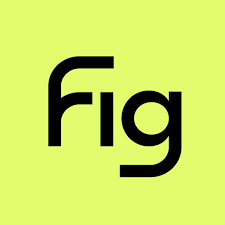
13. Fig: Food Scanner
Fig is designed to help people navigate food sensitivities and dietary restrictions by scanning barcodes and identifying ingredients that may cause issues. Users can create a profile by selecting dietary needs like gluten-free, dairy-free, soy-free, or low-FODMAP, and the app flags any potential problem ingredients in scanned products.
Rather than rating the overall healthiness of food, Fig focuses on ingredient-level analysis. It highlights additives, allergens, and other components that may not be obvious on labels. This makes it easier to shop confidently, especially for those managing multiple dietary needs at once.
Key Highlights:
- Barcode scanning for food sensitivity alerts
- Customizable dietary profiles
- Ingredient-level flagging for allergens or intolerances
- Focus on packaged foods with clear guidance
Who it’s best for:
- People managing food allergies or intolerances
- Shoppers with complex dietary restrictions
- Users looking for ingredient-based scanning tools
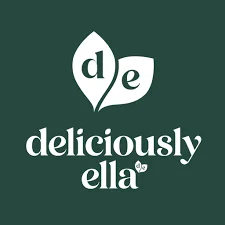
14. Deliciously Ella
Deliciously Ella is a plant-based food and lifestyle app with recipe collections, wellness content, and a built-in barcode scanner for branded food products. The scanner helps users log packaged foods into the app’s food diary and view basic nutritional info. While not built for in-depth calorie tracking, it supports mindful eating through clean, plant-based meal ideas.
The app is structured around plant-based living, with recipes, guided wellness practices, and tools to log meals and habits. The food scanner works alongside these features to provide a simple way to keep track of what you’re eating without being overly numbers-focused.
Key Highlights:
- Barcode scanning for basic food logging
- Focused on plant-based meals and clean eating
- Includes wellness content and guided practices
- Recipe collections aligned with lifestyle goals
Who it’s best for:
- Users following a plant-based diet
- People looking for simple meal logging
- Individuals interested in food and wellness balance

15. KitchenPal
KitchenPal is a pantry and grocery manager that includes barcode scanning to help track what users already have at home. The app allows users to scan food items into their virtual pantry, organize shopping lists, and get recipe suggestions based on available ingredients. It works as a kitchen assistant more than a nutrition tracker.
By scanning barcodes, users can quickly update their inventory and avoid buying duplicates or missing key ingredients. KitchenPal doesn’t focus on evaluating food for healthiness but aims to reduce food waste and make meal planning more efficient.
Key Highlights:
- Barcode scanning for pantry inventory
- Suggests recipes based on ingredients at home
- Grocery list building from scanned items
- Helps reduce food waste and plan meals
Who it’s best for:
- Users managing pantry inventory
- People who want to reduce food waste
- Home cooks looking to use up what they already have
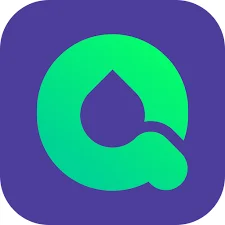
16. Snaq
Snaq is a food tracking app that combines barcode scanning with visual food logging. Users can scan packaged items or take photos of their meals to log them in the app. It provides a breakdown of calories, macronutrients, and other key values to help users stay on track with their nutrition goals.
The barcode scanning tool is useful for quickly logging store-bought foods, while the photo-based logging offers flexibility for homemade meals. Snaq focuses on building habits through tracking rather than analyzing the healthiness of individual foods.
Key Highlights:
- Barcode scanning for packaged food logging
- Photo-based meal tracking option
- Displays calories, macros, and nutrition data
- Designed to support consistent eating habits
Who it’s best for:
- Users combining packaged and homemade meals
- People who prefer visual tracking options
- Individuals building consistency in food logging
Conclusion
With so many food choices out there, it’s not always easy to figure out what’s actually good for you. That’s where food scanning apps come in handy. Whether you’re checking for hidden ingredients, managing a specific diet, or just trying to make more informed choices at the grocery store, these apps can seriously simplify the process.
The best part is, there’s something out there for everyone. Some apps help you avoid allergens, others track your macros, and a few even turn your pantry into a well-oiled meal-planning machine. It’s all about finding the one that fits your lifestyle and goals. Give a few a try, see what works, and let your phone do some of the heavy lifting when it comes to eating smarter.
